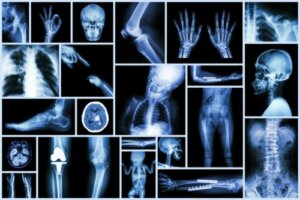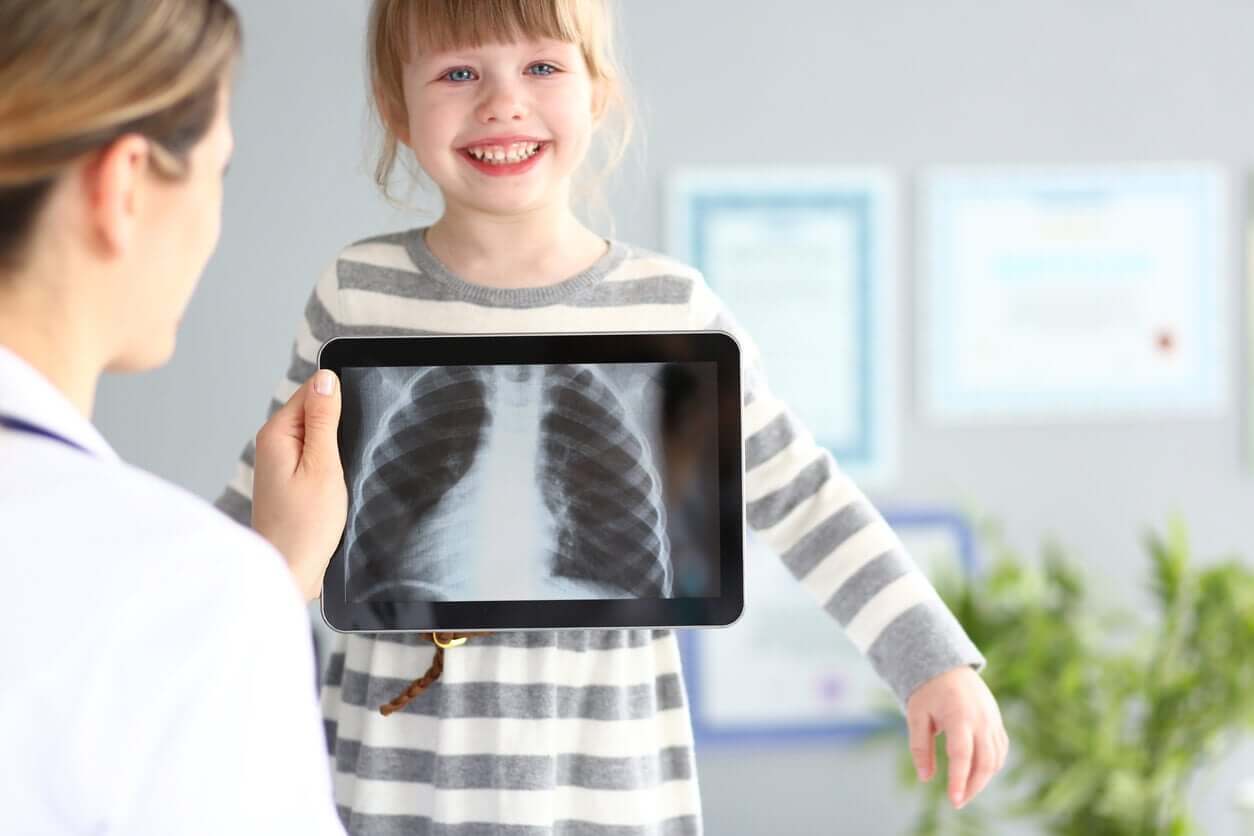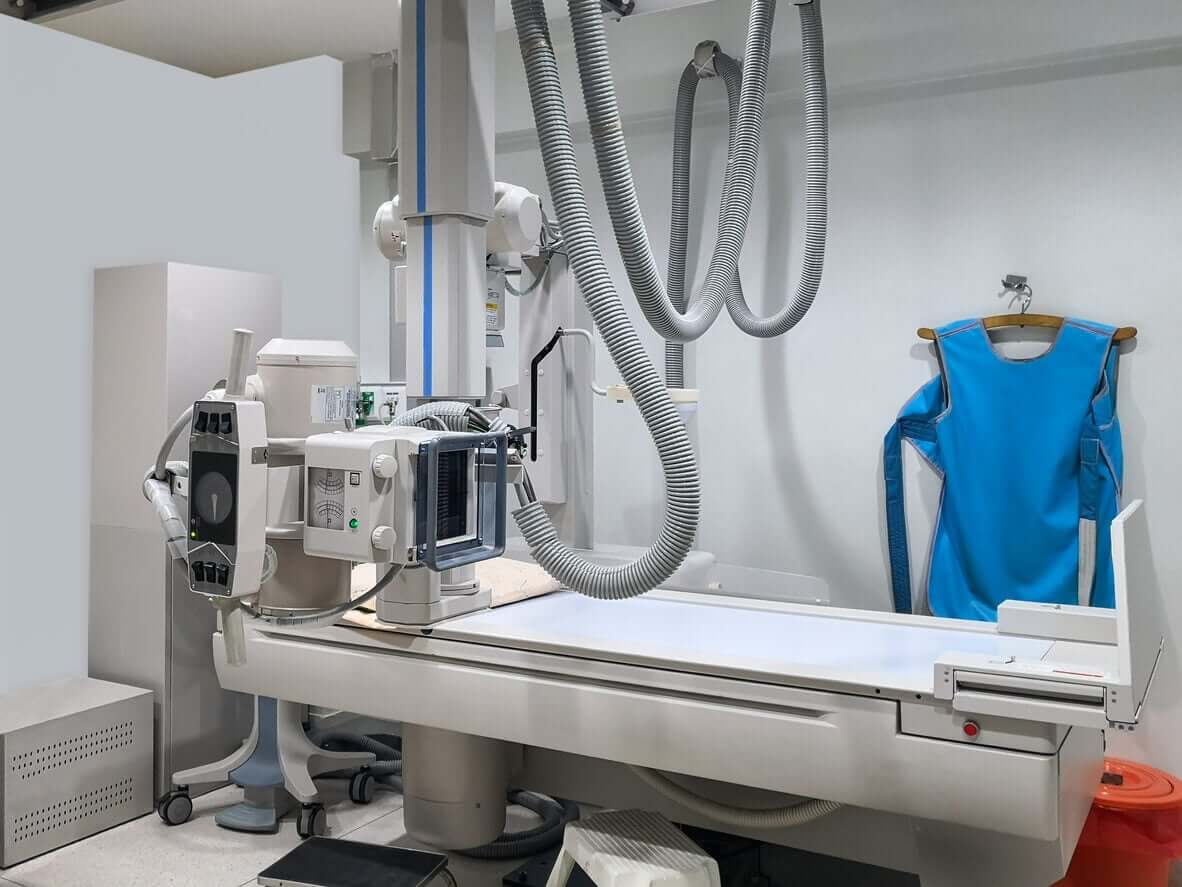X-rays in Children: What You Need to Know


Written and verified by the pediatrician Marcela Alejandra Caffulli
In the following article, we’ll tell you all about X-rays and particularly about X-rays in children. Without a doubt, the discovery of radiography was one of the most important milestones in history. Starting in 1895, the medical sciences adopted this novel technique to complement clinical information and arrive at unexpected diagnoses. Although it was a mere mortal who had a revelation on the night of November 8, 1885, many scientists of his time also contributed their own.
The fact is that today, almost 126 years later, we have this resource almost in the palm of our hands every time we need it. And like all scientific advancements, it’s never bad in and of itself. It’s up to us humans to turn it into something great or a complete nightmare.
“I had not revealed anything to anyone about my work. I told my wife that I was doing something that would make people, when they found out, say: ‘Röntgen has lost his mind.’
-Wilhelm Conrad Roentgen, January 1896-
What are the benefits of X-rays for children?
Like any other imaging study, X-rays allow us to learn about aspects of children’s bodies that we can’t see with the naked eye.
In the emergency room, a simple X-ray helps us to confirm the diagnosis of a fracture, detect the presence of a foreign body in the airway, or define if abdominal pain requires surgical treatment.
In other medical areas and disciplines, X-rays have brought endless benefits and we can be sure of that. In addition, they are quick, inexpensive studies, available in the vast majority of healthcare centers and that, in general, don’t require sedation or anesthesia procedures in order to be carried out.
However, it’s important to make rational and responsible use of radiographs in order to get the most out of them at the lowest possible cost.

What are the risks associated with X-rays in children?
Children are not miniature adults, but differ from them in several ways.
First of all, all of their organs and tissues are constantly growing and maturing. This makes them more likely to develop certain diseases when they’re exposed to harmful stimuli, especially in a sustained way over time. In this sense, any toxin or radiation from the environment can cause more severe damage to a developing organism than to an adult one.
Second, the smaller the size, the lower the dose required for a potentially harmful substance to cause toxicity. If we focus on radiation, an X-ray dose calculated for an adult X-ray can be very harmful to a child’s body.
Finally, in children, it’s necessary to consider two fundamental concepts:
- The latency of the damage produced by radiation: That is, the possibility of manifesting diseases after 20 or 30 years of having been exposed.
- Cumulative damage throughout life: Little ones have many years ahead of them and will likely need much more radiation along the way.
Therefore, radiology experts consider children to be especially radiosensitive. For this reason, requesting an X-ray or similar study requires extreme precaution should only be done when the benefit outweighs the risks.
You may be interested: Phantom Injuries in Children: What You Need to Know
Long-term cancer risk
To this day, there’s some controversy about this issue. However, a slightly increased risk of cancer in the future has been shown with just a single exposure to ionizing radiation during childhood.
However, this estimate is obtained from large-scale mathematical model calculations. It doesn’t mean that if we X-ray a child in their early life, they’ll necessarily develop a malignancy.
Strategies to reduce the risks of X-rays in children
First of all, and besides the recommendations of experts, pediatricians must bear in mind that reducing the risk of medical radiation in children is our responsibility.
In other words, we need to limit the orders for radiographs to those cases in which they allow us to obtain a quick, useful, and simple answer in order to solve a specific clinical question.
The American College of Radiology Appropriateness Criteria suggests following the acronym ALARA as a practical guide to the use of radiation for medical purposes. This rule is As Low As Reasonably Achievable or, in other words, as low as possible.
At the same time, the United States Food and Drug Administration established in 2017 a regulation for the manufacture and use of devices or adapters for X-ray equipment for the exclusive use of pediatric patients.
Some of the regulations indicate that the equipment must be designed and tested for this purpose. Likewise, they must specify on their labels if they are suitable for the use of babies, children, or adolescents, according to the parameters of weight, height, or age.

X-rays in children are safe studies
After more than a century of development and fine-tuning of this technique, we can say that X-rays are a safe study for children. As long as you have the right equipment and specialized professionals, the benefits can outweigh the risks.
In addition, as it’s a quick, painless, and non-invasive study, it’s a good option for use in children. However, as we’ve already made clear, it should be reserved for those cases that justify it.
In the following article, we’ll tell you all about X-rays and particularly about X-rays in children. Without a doubt, the discovery of radiography was one of the most important milestones in history. Starting in 1895, the medical sciences adopted this novel technique to complement clinical information and arrive at unexpected diagnoses. Although it was a mere mortal who had a revelation on the night of November 8, 1885, many scientists of his time also contributed their own.
The fact is that today, almost 126 years later, we have this resource almost in the palm of our hands every time we need it. And like all scientific advancements, it’s never bad in and of itself. It’s up to us humans to turn it into something great or a complete nightmare.
“I had not revealed anything to anyone about my work. I told my wife that I was doing something that would make people, when they found out, say: ‘Röntgen has lost his mind.’
-Wilhelm Conrad Roentgen, January 1896-
What are the benefits of X-rays for children?
Like any other imaging study, X-rays allow us to learn about aspects of children’s bodies that we can’t see with the naked eye.
In the emergency room, a simple X-ray helps us to confirm the diagnosis of a fracture, detect the presence of a foreign body in the airway, or define if abdominal pain requires surgical treatment.
In other medical areas and disciplines, X-rays have brought endless benefits and we can be sure of that. In addition, they are quick, inexpensive studies, available in the vast majority of healthcare centers and that, in general, don’t require sedation or anesthesia procedures in order to be carried out.
However, it’s important to make rational and responsible use of radiographs in order to get the most out of them at the lowest possible cost.

What are the risks associated with X-rays in children?
Children are not miniature adults, but differ from them in several ways.
First of all, all of their organs and tissues are constantly growing and maturing. This makes them more likely to develop certain diseases when they’re exposed to harmful stimuli, especially in a sustained way over time. In this sense, any toxin or radiation from the environment can cause more severe damage to a developing organism than to an adult one.
Second, the smaller the size, the lower the dose required for a potentially harmful substance to cause toxicity. If we focus on radiation, an X-ray dose calculated for an adult X-ray can be very harmful to a child’s body.
Finally, in children, it’s necessary to consider two fundamental concepts:
- The latency of the damage produced by radiation: That is, the possibility of manifesting diseases after 20 or 30 years of having been exposed.
- Cumulative damage throughout life: Little ones have many years ahead of them and will likely need much more radiation along the way.
Therefore, radiology experts consider children to be especially radiosensitive. For this reason, requesting an X-ray or similar study requires extreme precaution should only be done when the benefit outweighs the risks.
You may be interested: Phantom Injuries in Children: What You Need to Know
Long-term cancer risk
To this day, there’s some controversy about this issue. However, a slightly increased risk of cancer in the future has been shown with just a single exposure to ionizing radiation during childhood.
However, this estimate is obtained from large-scale mathematical model calculations. It doesn’t mean that if we X-ray a child in their early life, they’ll necessarily develop a malignancy.
Strategies to reduce the risks of X-rays in children
First of all, and besides the recommendations of experts, pediatricians must bear in mind that reducing the risk of medical radiation in children is our responsibility.
In other words, we need to limit the orders for radiographs to those cases in which they allow us to obtain a quick, useful, and simple answer in order to solve a specific clinical question.
The American College of Radiology Appropriateness Criteria suggests following the acronym ALARA as a practical guide to the use of radiation for medical purposes. This rule is As Low As Reasonably Achievable or, in other words, as low as possible.
At the same time, the United States Food and Drug Administration established in 2017 a regulation for the manufacture and use of devices or adapters for X-ray equipment for the exclusive use of pediatric patients.
Some of the regulations indicate that the equipment must be designed and tested for this purpose. Likewise, they must specify on their labels if they are suitable for the use of babies, children, or adolescents, according to the parameters of weight, height, or age.

X-rays in children are safe studies
After more than a century of development and fine-tuning of this technique, we can say that X-rays are a safe study for children. As long as you have the right equipment and specialized professionals, the benefits can outweigh the risks.
In addition, as it’s a quick, painless, and non-invasive study, it’s a good option for use in children. However, as we’ve already made clear, it should be reserved for those cases that justify it.
All cited sources were thoroughly reviewed by our team to ensure their quality, reliability, currency, and validity. The bibliography of this article was considered reliable and of academic or scientific accuracy.
- Busch, U. Wilhelm Conrad Roentgen. El descubrimiento de los rayos x y la creación de una nueva profesión médica. Revista argentina de radiología. Vol. 80. Núm. 4.
páginas 298-307 (Octubre – Diciembre 2016). DOI: 10.1016/j.rard.2016.08.003. Disponible en: https://www.elsevier.es/es-revista-revista-argentina-radiologia-383-articulo-wilhelm-conrad-roentgen-el-descubrimiento-S0048761916301545 - Exposure. Pediatr Radiol. 2019 Jul;49(8):1104-1105. doi: 10.1007/s00247-019-04448-8. PMID: 31254020. Disponible en: https://pubmed.ncbi.nlm.nih.gov/31254020/
- Levin TL. Pediatric Imaging: Radiation Exposure and How We Image. Pediatr Rev. 2018 Jan;39(1):50-52. doi: 10.1542/pir.2017-0181. PMID: 29292293. Disponible en: https://pubmed.ncbi.nlm.nih.gov/29292293/
- Arthurs OJ, Bjørkum AA. Safety in pediatric imaging: an update. Acta Radiol. 2013 Nov;54(9):983-90. doi: 10.1177/0284185113477399. Epub 2013 Apr 30. PMID: 23550188. Disponible en: https://sci-hub.se/10.1177/0284185113477399
- ACR Statement on FDA Radiation Reduction Program. [Internet] 2011. Disponible en: https://www.acr.org/Advocacy-and-Economics/ACR-Position-Statements/FDA-Radiation-Reduction-Program
This text is provided for informational purposes only and does not replace consultation with a professional. If in doubt, consult your specialist.








